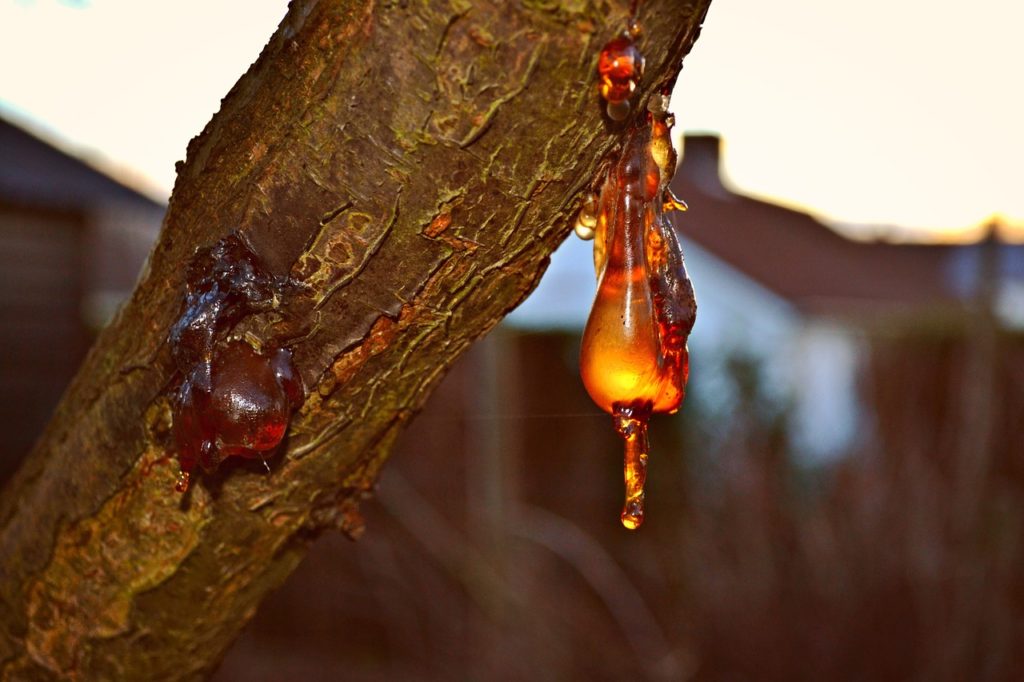Introduction:
Resins, balsams, and related substances are complex chemical products produced by specialized ducts, cavities, or metabolic by-products of trees and other plant forms. Resins are insoluble in water and are usually hard, transparent, or clear. When heated, they soften and usually melt. Their chemistry is elaborate, containing mixtures of resin acids, alcohols, tannins, esters, and other compounds.
Oleoresins are mixtures of resins and volatile oils. Oleoresins include turpentine and Canada balsam.
Some useful Tree resins:
Myrrh
The history of myrrh is nearly as ancient as written history itself. In biblical times, the price of myrrh was equal to that of gold. The Ebers papyrus, written in 1500 B.C., describes the use of myrrh for wounds, sores, and as an ingredient in embalming solution. Ancient Sumerian records document its use for worms and the treatment of infected teeth.
Guggul:
It is an oleo gum resin from the Commiphora mukul or C. wightii species, has attracted attention both in the marketplace and in the scientific literature in recent years. This resin has been used in Ayurvedic medicine as a treatment for arthritis, a weight-reducing agent, and to lower cholesterol.
Frankincense:
Frankincense, like myrrh, was once a gift of the Magi to the infant Christ. The gum is not used medicinally today, although animal studies have shown some anti-inflammatory activity. However, it is still widely used as an ingredient in perfumes, including those with floral, citrus, and violet scents.
Boswellia:
This oleo gum resin resembles frankincense, which comes from African and Middle Eastern species of Boswellia. But Boswellia serrata is a small tree, up to fifteen feet in height; it is found in dry hilly areas in India. Boswellia is valued as a traditional anti-inflammatory; it’s used to relieve arthritis and low back pain. The resin is composed mostly of triterpenes including alpha- and beta-boswellic acids and other boswellic acid derivatives. Boswellia does have an advantage over conventional NSAIDs in that it has a much lower rate of side effects, especially gastric irritation and ulcer-inducing activity.
Sweet gum, an American resin:
The common sweet gum, Liquidambar styraciflua, is still a modern source of resin. Modern pharmacology confirms that sweet gum’s resins have antiseptic, expectorant, antimicrobial, and anti-inflammatory properties. Its primary commercial use is as an ingredient of the compound tincture of benzoin, available in every drugstore.
Other useful Resins:
Balsam of Peru and Tolu balsam are occasionally used as ingredients in cough or cold formulations.
Conclusion:
Tree Resins and their by-products are still very much a part of our everyday lives. They are often used in infinitesimal amounts, as flavorings, perfume fragrances, and cosmetics. The use of resins such as myrrh, boswellia, and guggul is as relevant today as it was in the Biblical times.
